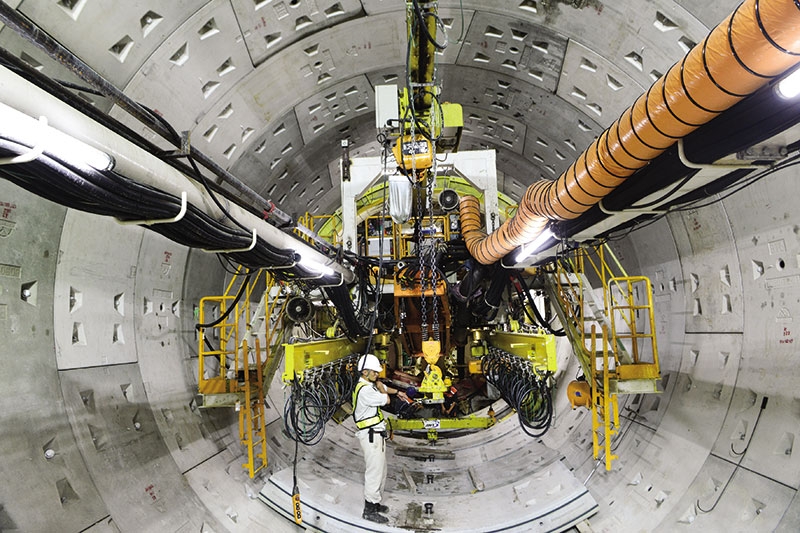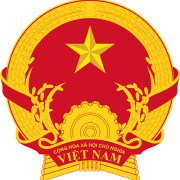
A smart city project requires extensive infrastructure works in order to be able to implement the digital technology that makes the concept possible
Ho Chi Minh City’s dream
Under the scheme “Developing Ho Chi Minh City into a smart city in 2017-2020, with a vision to 2025,” all technological solutions applied will benefit from e-government, smart traffic systems, a smart power grid, smart management of water sources, environmental supervision, and waste management.
Breakthroughs are to be achieved in seven prioritised fields, namely administrative reforms closely linked with e-government, traffic, anti-inundation, environment, social order, urban planning, and healthcare and community-oriented medical services paired with food safety.
One of the biggest highlights of this plan is an “open technological architecture,” in which enterprises will jointly build the city, and all people can participate transparently.
“The technological framework for the future smart Ho Chi Minh City will be a combination of state-of-the-art technologies within a unified architectural model, which will enable the city’s achievements in IT application,” said Vietnam Post and Telecommunications Group (VNPT) chairman Tran Manh Hung. “Such a technological framework will be firm groundwork for the city to set up the fundamental capacities of a smart urban area, including analysis and forecasting based on big data, connectivity and sharing of data among specialised sectors, and provision of open data for people and enterprises.”
In the near future, travellers in the city will be able to use mobile apps to select their routes in order to avoid traffic jams. On all streets, lamp posts will be installed with cameras which will send images to a monitoring centre which will automatically regulate traffic. Travellers will then be informed about what routes they should use to avoid traffic jams.
In addition to the digital map system, there will be electronic tickets for bus commuters as well as automatic tolling systems at all build-operate-transfer toll stations, as well as smart car parking areas. Similarly, thanks to sensor systems, the city will be able to make accurate forecasts of inundation and then apply timely solutions in order to reduce losses.
“Smart traffic is just part of the city’s efforts to turn itself into a smart city,” said Pham Duc Long, general director of VNPT.
Taking the healthcare sector as an example, he said that when a patient is treated in a hospital, all of his/her profile and personal information must be made available online and shared among all hospitals. All the information will also be accessible to healthcare insurance agencies.
“At the same time, patients can also be surveyed about how satisfied they are with the medical services,” Long said.
The city now faces lots of issues, such as traffic jams and inundation. Snarl-ups cost the city about $1.2 billion and inundation over VND5 trillion ($222.2 million) annually.
Vietnam currently has more than 30 smart city models deployed by VNPT and Viettel, in combination with Microsoft, Fujitsu, and IBM, with each having its own characteristics. Thus, Ho Chi Minh City has to find a unique smart city model for itself because developing smart cities will no doubt bring great changes to all.
- A ‘smart city’ will only earn its title when it fulfils three key factors: efficient infrastructure, sustainable development, and a friendly living environment.
- Building a smart city aims to improve people’s lives, increase operational efficiency and reduce costs, attract investment, and decrease environmental pollution.
- A smart city must be built based on smart technologies, the provision of smart services, smart management, and a smart life.
- Technologies used to build a smart city include assorted sensors and smart gauges, wireless fibre optic systems, data analysis software, and other technologies.
- A smart city must have many key components applied with modern IT, including e-government, environment, water sources, energy, traffic, infrastructure planning and management, education, health care and social welfare, social security and development, and culture and tourism.
Phu Quoc – Vietnam’s first smart city
Not only Ho Chi Minh City, but many provinces and cities are currently compiling their own schemes on developing smart urban areas, focusing on many sectors, including healthcare, environment, e-government, traffic, and security.
One of those is Phu Quoc, an island district under the administration of the southern province of Kien Giang. Phu Quoc is now surging to become a small-scale smart urban area.
The entire island is now covered by free Wifi powered by 4G. All visitors are provided with up-to-date information about the island via their mobile phones. The information covers weather, humidity, water indexes, tourist spots, and specialties, as well as the island’s history. Visitors are even given information about all the resorts and hotels, as well as their room rates and bookings.
Installation of Phu Quoc’s smart traffic system has also been completed, with cameras covering streets, roads, parks, and residential areas, helping to ensure social order and safety for all people.
Apps on mobile phones also help visitors report complaints and incidents to the authorised agencies in a timely manner. Moreover, Phu Quoc’s inhabitants and enterprises do not have to take a boat to Kien Giang itself to conduct administrative procedures. They are now able to use e-government services on the island to deal with 450 procedures at the district and commune levels. Each citizen on the island has their own account to transact business with authorised agencies.
Pham Van Nghiep, Deputy Chairman of the Phu Quoc People’s Committee, said, “Phu Quoc is a treasure. However, our 10 years of rapid economic growth has resulted in different issues such as environmental pollution. Thus, it has been necessary for us to build the island into a smart urban area, so that it can develop sustainably and become a national administrative and economic special zone, which can compete regionally and globally.”
